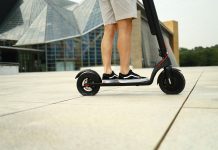From Midtown to Edgewood, electric scooters have become a common sight on Atlanta streets. Marketed as a quick, affordable, and eco-friendly transportation option, they have reshaped the way many people move through the city. But behind the convenience lies a growing concern: are riders being set up to fail by a system that prioritizes expansion over safety? As injuries increase, many victims are left to navigate complex questions of liability and responsibility, often needing guidance from the best personal injury lawyer to make sense of it all.
As injuries and accidents rise, the spotlight is shifting from individual fault to the broader infrastructure, corporate practices, and enforcement issues that influence how and where e-scooters are used. Understanding these deeper issues reveals that many accidents may not be the result of simple rider negligence, but rather a perfect storm of poor design, lack of oversight, and risky policies.
A Lack of Rider Education
Anyone with a smartphone and a credit card can rent an e-scooter within seconds. What they rarely receive, however, is meaningful guidance. Riders often hop on without any safety instruction, knowledge of traffic laws, or experience navigating busy streets. Many are tourists or first-time users unfamiliar with local road conditions.
Without any mandatory education or testing, riders are thrust into fast-moving environments that can be challenging to navigate, even for seasoned cyclists. This leaves many vulnerable from the moment they begin their ride.
Companies Prioritize Scale Over Safety
E-scooter companies have experienced explosive growth in popularity by offering convenience at the tap of a screen. But with that speed of growth comes a troubling lack of safety infrastructure. User agreements are often filled with fine print that waives liability, and while riders are required to wear helmets, these are rarely provided or enforced.
Many companies deploy scooters in areas that lack proper road conditions, signage, or even sidewalks. Their business model relies on volume, which encourages the rapid placement of devices in high-traffic areas without considering the real-world risks.
The Infrastructure Is Not Designed for Micromobility
Atlanta’s roads were built for cars, not scooters. Sidewalks are often cracked or narrow, bike lanes are limited or nonexistent, and vehicle traffic dominates the landscape. In many neighborhoods, scooter riders must choose between riding on dangerous streets or illegal sidewalks.
This creates a constant tension between riders, pedestrians, and drivers, none of whom have a clear space to operate safely. Even responsible riders find themselves in risky situations due to inadequate infrastructure.
Enforcement Gaps and Regulatory Blind Spots
City regulations around scooters exist, but enforcement is inconsistent. Some riders violate traffic laws without consequence, while others are penalized unfairly in ambiguous situations. There is also a lack of clarity about who is responsible when things go wrong.
When an accident occurs, blame often falls on the individual rider. But when the environment is hostile, and rules are vague or poorly enforced, the system itself may be the greater contributor to the danger.
Scooter Maintenance and Device Reliability
Riders often assume that the scooter they are using is in good working condition. However, reports of brake failures, stuck throttles, and battery issues suggest otherwise. Companies are responsible for maintaining their fleets, but rapid deployment and high usage rates can lead to maintenance lapses.
A rider may be blamed for losing control of a scooter, but in fact, the device itself may have malfunctioned. Without access to maintenance logs or internal diagnostics, proving a defect can be incredibly difficult.
Data Collection Without Transparency
Scooter companies collect enormous amounts of user data, including GPS location, speed, and ride duration. In theory, this information could be used to improve safety and analyze accident patterns. In practice, it is often locked behind corporate walls.
In some cases, data is used to shift blame away from the company. If an accident occurs, the company may point to the rider’s speed or route choice without disclosing the full context of the scooter’s behavior or mechanical performance.
What Should Change
Addressing these problems requires a comprehensive approach. Cities like Atlanta must rethink their infrastructure to accommodate micromobility more effectively. Scooter companies should take a more proactive role in educating users, maintaining their equipment, and designing apps that prioritize safety over convenience.
Public officials and advocates can push for stronger safety standards, clearer regulations, and more transparency from scooter providers. Holding all players accountable—not just the individual rider—can lead to safer streets and more responsible transportation options.
Final Thoughts
Rather than placing all the responsibility on individuals, it is time to take a closer look at the systems shaping rider behavior and increasing risk. Only then can we build a micromobility culture that truly works for everyone. And if you have been injured in an e-scooter accident, seeking advice from the best personal injury lawyer can be a critical first step in understanding your rights and holding the right parties accountable.








